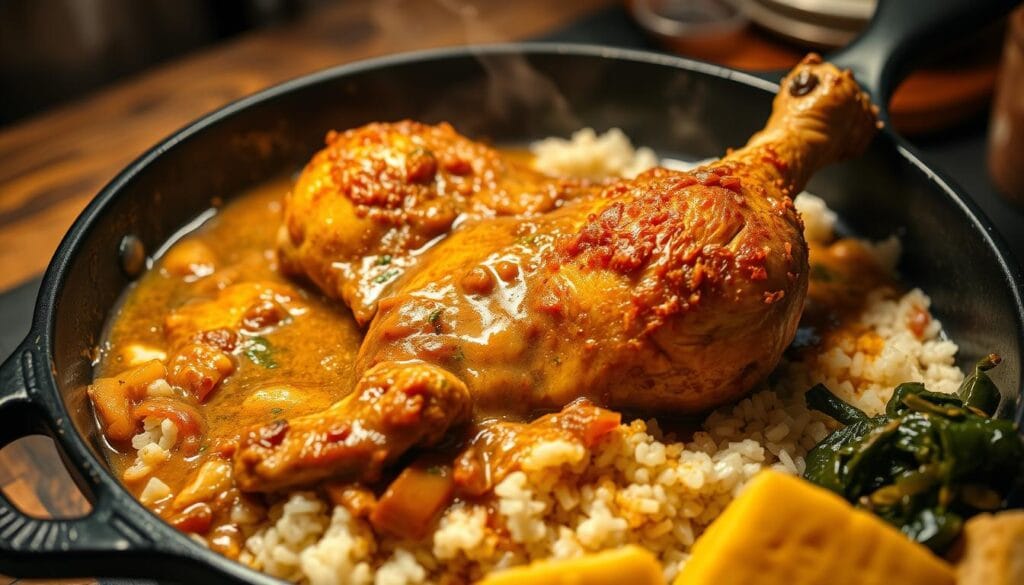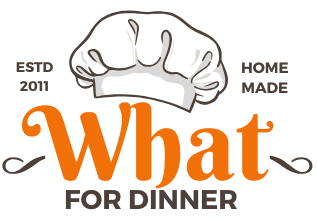There’s something magical about a dish that feels like a warm hug. Maybe it’s the way golden-brown pieces of poultry simmer in rich gravy, filling your kitchen with the kind of aroma that pulls everyone to the table. Smothered chicken isn’t just food—it’s a memory-maker, a tradition passed down through generations, especially in Southern homes where comfort and flavor collide.
This guide isn’t about complicated techniques or hard-to-find ingredients. It’s about crafting hearty meals that bring people together. Whether you’re cooking for a weeknight dinner or a Sunday gathering, these methods blend simplicity with deep, savory tastes. You’ll discover how to balance spices, layer textures, and create dishes that taste like they’ve been simmering all day—even if you’re short on time.
We’ve curated five standout versions of this classic meal, each with its own twist. From crispy-skinned delights to creamy mushroom-infused favorites, these options cater to every palate. You’ll also learn pro tips for choosing the best cuts, mastering pan sauces, and avoiding common pitfalls like overcooking.
Key Takeaways
- Explore time-tested Southern methods for tender, flavorful results.
- Learn how to layer spices and sauces for maximum depth.
- Discover shortcuts to simplify cooking without sacrificing taste.
- Get insights on selecting quality ingredients for better texture.
- Master techniques to make restaurant-quality meals at home.
Introduction to Southern Comfort and Smothered Chicken
Southern kitchens have long been hubs of connection, where meals tell stories of resilience and joy. At the heart of this tradition lies a dish that turns simple ingredients into soul-nourishing experiences.
What Makes This Dish a Family Favorite
Generations swear by the magic of golden-brown poultry paired with velvety gravy. As Stephanie’s blog notes, the crispy skin locks in juices, while Rosie’s method highlights how a well-seasoned pan creates layers of texture. Families adore it because every bite balances tenderness with rich, savory notes—no fancy tools required.
Perfecting the sear takes patience. Heat your skillet until it sizzles, then let the meat cook undisturbed for 5-7 minutes. This step isn’t just about color—it builds a flavor foundation for the gravy. Timing matters: undercook, and you’ll miss the crunch; overcook, and dryness creeps in.
The Secret Lies in the Gravy
Homemade gravy transforms the ordinary into extraordinary. Unlike store-bought versions, scratch-made sauces let you control every pinch of salt and spice. Simmer pan drippings with flour and broth, stirring until the mixture coats your spoon. The result? A velvety blanket that clings to each piece, amplifying the flavor without overpowering it.
This dish thrives on simplicity. With just a skillet and 45 minutes, you can create a comfort food masterpiece. It’s no wonder Southern cooks have passed down this chicken recipe for decades—it’s as much about togetherness as it is about taste.
Essential Ingredients and Tools for a Perfect Meal
Great meals start with the right foundation. Like a painter’s brushstrokes, your tools and ingredients shape the final masterpiece. Gather these essentials to build flavors that linger on the tongue and turn ordinary meals into memorable ones.
Must-Have Kitchen Tools
A heavy skillet like Le Creuset’s enameled cast iron distributes heat evenly, preventing hot spots. Sturdy tongs let you flip meat without tearing its crispy skin. Don’t overlook a meat tenderizer—it ensures even thickness for consistent cooking.
Glass bowls with measurement markings simplify mixing spices. They’re heat-resistant and won’t absorb odors. Pair them with stainless steel measuring spoons for accuracy. These tools work together like a well-rehearsed orchestra.
Key Ingredients and Their Roles
Fresh flour forms the base of your gravy, while oil with a high smoke point (like avocado) creates that golden crust. Bone-in cuts stay juicier, and seasonings like paprika and thyme add earthy warmth.
| Ingredient | Role | Pro Tip |
|---|---|---|
| Chicken Broth | Deepens gravy flavor | Use low-sodium to control saltiness |
| Garlic | Adds aromatic punch | Minced finely for even distribution |
| Onion | Balances richness | Caramelize for sweetness |
Every element matters. Quality chicken and fresh herbs transform simple food into something extraordinary. With these basics, you’re ready to layer flavors like a pro.
Step-by-Step Cooking Process
Mastering this dish hinges on two phases: prepping the protein and building that signature crust. Let’s break down each stage to ensure your skillet work yields juicy meat and crave-worthy texture.
Preparing the Chicken and Seasoned Flour
Start by slicing boneless cuts into even portions. Lightly pound thicker pieces with a mallet—this ensures uniform cooking. Combine flour, garlic powder, and smoked paprika in a shallow dish. Dredge each piece thoroughly, shaking off excess to prevent clumping.
Pro tip: Let the coated meat rest for 5 minutes. This helps the coating adhere better during frying.
Creating the Perfect Sear
Heat oil in a heavy pan over medium-high until it shimmers. Carefully add chicken in a single layer—crowding causes steaming. Cook undisturbed for 4-5 minutes until golden. Flip using tongs, then repeat on the other side.
Once browned, set aside the pieces on a wire rack. This preserves crispness while you prepare the gravy. Remember: a hot pan and patience are your allies here. Rushing this step risks uneven browning or undercooked flour coating.
Techniques for Perfecting the Gravy
The soul of this dish lies in its velvety sauce. A well-crafted gravy elevates every bite, turning simple ingredients into a cohesive masterpiece. Let’s explore how to build layers of richness while controlling texture.
Mastering the Roux for a Rich Flavor
Start by melting butter over medium heat. Whisk in flour gradually—this mixture becomes your flavor foundation. Cook for 2-3 minutes until it turns golden, releasing a nutty aroma. This step ensures no raw flour taste lingers.
Slowly pour in chicken broth, stirring constantly to prevent lumps. Add minced garlic here for depth. Once combined, incorporate half-and-half or cream in a thin stream. The liquid should bubble gently as it thickens into a silky blanket.
Adjusting Consistency: Thick vs. Thin
Prefer a thicker gravy? Use a 1:1 ratio of flour to fat. For lighter sauces, reduce flour by half. Always add chicken broth in stages, letting the mixture absorb fully before pouring more.
| Consistency | Key Ingredients | Technique |
|---|---|---|
| Thick | 4 tbsp flour + 4 tbsp butter | Simmer 8-10 minutes |
| Thin | 2 tbsp flour + 4 tbsp butter | Cook 5-6 minutes |
Finish with a splash of cream for luxurious texture. Taste and adjust seasoning—this attention to detail separates good gravy from flavor-packed perfection. Master these methods, and your smothered chicken recipe will rival any restaurant’s.
Variations: Chicken Breasts, Thighs, and Beyond
Your skillet isn’t picky—it welcomes all cuts with equal sizzle. Whether you crave the lean bite of chicken breasts or the rich juiciness of thighs, the core method remains the same. Dark meat lovers swear by thighs for their higher fat content, which stays tender during longer cooks. White meat fans? Pound breasts to ½-inch thickness before coating to ensure even crisping.
Need a quicker meal? Use boneless cuts and reduce simmer time by 5 minutes. Prefer pork? Swap in chops using the same dredging technique—just adjust cook times based on thickness. Web sources confirm tenderizing tougher cuts helps the seasoned flour cling better, creating that golden armor everyone loves.
Here’s the beauty: once you master the basics, creativity takes over. Mix up spices for Cajun heat or herby brightness. Serve over greens one night, tucked into sandwiches the next. The flexibility lets you make smothered chicken fit any mood or schedule without extra effort.
Remember—whether you add chicken to the pan or pork, low-and-slow simmering builds flavor depth. Keep the heat steady, taste as you go, and let your protein pick guide the adventure. Your family won’t know what’s coming next—and that’s half the fun.
How to Serve and Pair with Comfort Sides
A well-paired meal turns dinner into an experience. The right sides don’t just fill plates—they create harmony between textures and flavors, making each bite of your main dish shine. Think golden biscuits soaking up gravy or crisp greens cutting through richness.

Delicious Side Options: Mashed Potatoes, Biscuits, and More
Creamy mashed potatoes act as a velvety base for rich gravy. Use Yukon Golds for their buttery texture, and fold in warm milk with a pinch of salt for smoothness. Keep them covered near the stove to stay piping hot.
Flaky buttermilk biscuits offer a buttery contrast. Brush tops with melted butter right after baking for a glossy finish. They’re perfect for sopping up every last drop of sauce.
Roasted green beans or garlicky collards add freshness. Toss them in olive oil and a sprinkle of paprika before roasting to balance the meal’s heartiness.
To serve smothered chicken family-style, arrange everything on a large platter. Let guests build their plates with crispy-edged meat, starchy sides, and vibrant greens. If reheating, use a low oven (275°F) to prevent drying out—and adjust your pan heat to keep gravy at a gentle simmer.
Pro tip: Dust biscuits with a touch of flour before baking for extra layers. Pairing these classics transforms your food into a cozy celebration, where every component plays its part.
Must-Try recipes for smothered chicken
Every region adds its fingerprint to this classic dish. From smoky Southwest spices to tangy Carolina vinegar finishes, these twists honor tradition while inviting innovation.
Exploring Different Regional Twists
Louisiana’s version kicks up the heat with cayenne and filé powder. A recipe card from New Orleans chefs suggests simmering with okra for authentic gumbo-inspired flair. In contrast, Appalachian cooks use buttermilk in their dredging mix for extra tang.
Midwestern adaptations often pair golden-brown pieces with cider-infused gravy. For a Tex-Mex spin, add cumin and top with pickled jalapeños. Each variation keeps the cozy essence intact while celebrating local flavors.
| Region | Signature Twist | Perfect Pairing |
|---|---|---|
| Deep South | Smoked paprika + collard greens | Cornbread |
| Texas | Chipotle + lime crema | Charro beans |
| Mid-Atlantic | Apple butter glaze | Buttermilk biscuits |
Follow instructions closely when testing new versions. A detailed chicken recipe ensures spices balance rather than compete. Adjust heat levels by reducing chili powders or adding honey for sweetness.
Serve Creole-style over cheesy grits, or go Midwest with a side of garlic-herb mashed potatoes. These small changes transform your food into a passport of flavors—proof that comfort knows no borders.
Southern Style Recipe Inspirations
Southern cooking roots run deep, carrying stories of resourcefulness and flavor in every bite. Generations have perfected methods that turn humble ingredients into soul-satisfying meals, where patience and technique shine brighter than complexity.

Traditional Southern Techniques
Slow-cooked onions form the backbone of authentic chicken gravy. Cook them in rendered bacon fat until caramelized—about 25 minutes on low heat. “This sweetness balances the savory notes,” says Louisiana chef Marie Dupont. “It’s where the magic begins.”
Combine garlic powder and onion powder with black pepper for a balanced seasoning blend. Dust your chicken generously before dredging in flour. Let it rest 10 minutes—this helps the coating stick during searing.
- Use cast iron skillets for even heat distribution
- Deglaze pans with broth to capture browned bits
- Simmer gravy 15+ minutes for silky texture
Achieving the perfect sear requires a hot pan and restraint. Resist flipping until edges crisp—about 6 minutes per side. This golden crust adds depth to the final dish while keeping meat juicy.
Regional touches make each smothered chicken unique. Coastal cooks might add thyme, while Appalachian versions often include apple cider vinegar. These subtle twists honor local harvests without straying from tradition.
“The secret’s in the rhythm—low heat, layered spices, and letting ingredients speak for themselves.”
From Mississippi to the Carolinas, these methods connect kitchens across generations. They transform simple meals into flavor-packed experiences that feel like coming home.
Pro Tips and Tricks for a Restaurant-Worthy Dish
Restaurant-quality dishes demand precision at every step. From the sizzle of your skillet to the final sprinkle of pepper, small adjustments create big flavor leaps. Let’s refine your technique with insights chefs use daily.
Enhancing Flavor With Proper Seasoning
Layer spices like a pro. Season meat 15 minutes before cooking—salt draws moisture to the surface, creating a crispier crust. Add smoked paprika or cayenne to your seasonings mix for warmth. A light dusting of black pepper post-frying adds aromatic punch without bitterness.
Web sources emphasize using a meat tenderizer. Gently pound thicker cuts to ensure even spice absorption. For golden-brown perfection, mix flour with cornstarch (1:1 ratio) in your dredging blend.
Tips on Browning, Frying, and Resting
Heat management is non-negotiable. Preheat your skillet until water droplets dance. Sear meat in batches to avoid steaming—each piece needs space. Cook 5-7 minutes per side until edges caramelize. This builds flavor for the chicken gravy.
- Rest meat 8 minutes after frying. Juices redistribute, preventing dryness.
- Use a splatter screen to maintain heat without messy cleanups.
- Troubleshoot soggy crusts: ensure oil reaches 350°F before adding protein.
“Patience with heat separates home cooks from pros. Let the pan work its magic.”
Share your success in a post to inspire others. With these instructions, your next meal will rival any bistro’s signature dish.
Storing and Reheating Your Smothered Chicken
Leftovers deserve the same care as the first serving. When you set aside portions, let them cool to room temperature first—about 20 minutes. Never leave food out longer than 2 hours to prevent bacteria growth. Divide into meal-sized amounts using shallow glass bowls or airtight containers.
Refrigerate for up to 3 days or freeze for 3 months. Label containers with dates to track freshness. For freezer storage, wrap pieces in parchment paper before sealing. This prevents ice crystals from altering the texture.
| Storage Method | Time Frame | Pro Tip |
|---|---|---|
| Refrigerator | 3 days | Place gravy in separate container |
| Freezer | 3 months | Use freezer-safe bags to save space |
Reheat gently to preserve tenderness. Thaw frozen portions overnight in the fridge. Warm in a skillet over low heat with a splash of chicken broth to revive moisture. Stir occasionally until steaming—about 8 minutes. Microwaving? Cover the bowl with a damp paper towel and use 50% power.
“Low-and-slow reheating keeps the crust crisp and gravy velvety. Rush it, and you’ll sacrifice texture.”
Share your success in a post if the dish tastes just-made. With these steps, every recipe stays delicious round two. Now that’s smart cooking!
Conclusion
Gathering around the table with a hearty meal creates moments that linger long after the plates are cleared. From mastering golden-brown sears to layering spices in velvety gravy, this guide equips you with time-tested techniques and fresh twists. Whether you prefer classic Southern methods or inventive regional flavors, every dish balances comfort and creativity.
Essential tools and detailed steps simplify cooking, letting you focus on what matters: shared joy. The blend of tradition and innovation ensures each bite delivers deep flavor without fuss. Serve these meals over creamy mashed potatoes or alongside buttery biscuits for a complete experience.
When you serve smothered chicken, you’re offering more than food—you’re crafting connection. These dishes adapt effortlessly to weeknights or celebrations, proving that soulful meals need no complicated scripts. Share your creations online, tag friends, and keep exploring the rich world of homestyle cooking.
Hungry for more? Dive into our other guides to discover how simple ingredients can transform into food memories. Your next kitchen adventure starts here.
FAQ
Why is smothered chicken considered a comfort food classic?
Can I use boneless chicken breasts instead of thighs?
What’s the secret to a deeply flavored gravy?
How do I prevent the seasoned flour from burning?
What sides best complement this meal?
How long can I store leftovers?
External Resources for Best Results:
- USDA Chicken Breast Nutrition: https://fdc.nal.usda.gov/fdc-app.html#/food-details/171705/nutrients
- National Cancer Institute on Broccoli Benefits: https://www.cancer.gov/about-cancer/causes-prevention/risk/diet/cruciferous-vegetables-fact-sheet
- Safe Grilling Tips: https://www.fsis.usda.gov/food-safety/safe-food-handling-and-preparation/grilling-safety
Looking to explore more healthy chicken bowls, low-carb chicken recipes, or broccoli recipes for dinner? Head over to www.whatfordinner.com for expert-crafted, nutrition-focused meal ideas.

ftg7ib
ib6kjq
ah0nva
Simply wish to say your article is as astounding. The clarity in your post is simply excellent and i can assume you are an expert on this subject. Well with your permission allow me to grab your feed to keep up to date with forthcoming post. Thanks a million and please continue the enjoyable work.
z3v3tm
Great line up. We will be linking to this great article on our site. Keep up the good writing.
Hello there! Do you know if they make any plugins to protect against hackers? I’m kinda paranoid about losing everything I’ve worked hard on. Any suggestions?
I likewise believe hence, perfectly indited post! .
I am always looking online for ideas that can help me. Thank you!
Keep working ,great job!